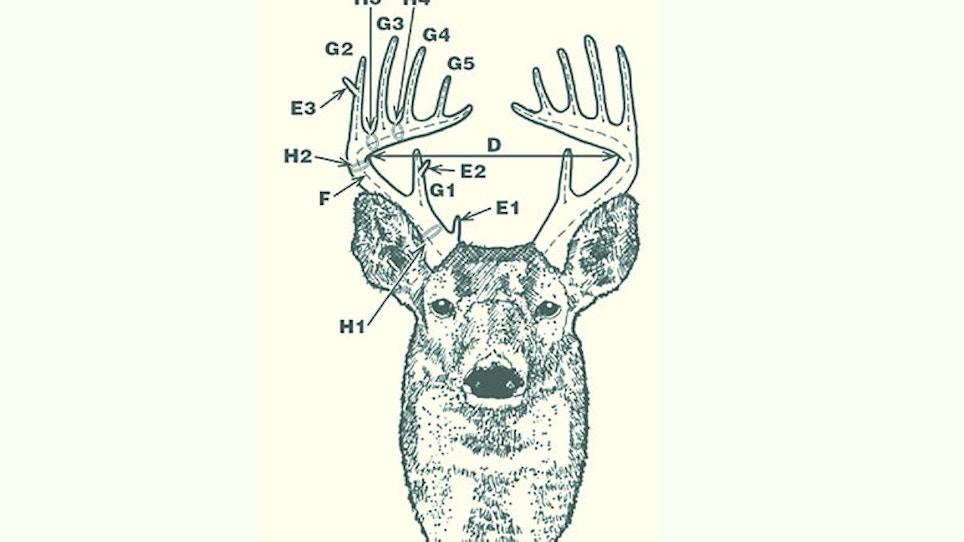To score a deer, you need a pen, paper, a flexible tape measure (like those found in sewing kits) and a scoring sheet. These are easily downloaded from record-keeping organizations like Boone and Crockett (B&C) and the Pope and Young Club (P&Y). A calculator also comes in handy.
About the record keepers
Boone and Crockett accepts trophies taken with all hunting tools — rifles, compound bows, etc. — and even legally-found trophies, whereas the Pope and Young Club is an archery-only record organization. Both use the same scoring system, but each has different minimums for record-book entry.
Scoring system 101
Scores are tallied in inches, but referred to as “points” when recorded. Measure each area to the nearest 1/8 of an inch. Potential trophies are recorded in two divisions:
Typical
Normal, symmetrical pattern of points.
Non-typical
Abnormal points are those non-typical in location (such as points originating from a point or from the bottom or sides of the main beam) or extra points beyond the normal pattern of points.
B&C has a typical minimum entry for whitetail deer of 170 points and 195 for non-typical. P&Y has a minimum whitetail deer entry of 125 for typical and 155 for non-typical racks.
What to measure
Here are four steps to help get the job done. Have your scoring document handy and log your measurements as you work your way through the beams and points.
Step 1
Measurements are taken from four major areas including the inside spread of the main beams measured at its widest point. Log this single measurement.
Step 2
Next, you’ll capture left and right measurements to log onto your scoring document, which provides two columns for this exercise. First, measure each main beam from the center of the outside edge of the burr along the outer edge to the end of the main beam point.
Step 3
Now for the points. Refer to each as G1, which is the brow point, and continue on noting as G2, G3, G4, G5 and so on.
Bonus Tips: measuring the points
A point must meet two requirements. First, the point must be at least 1-inch in length, and, second, it must be longer than it is wide at any location that’s at least 1-inch from the tip of the projection. Any point that doesn’t match the other side is noted as an abnormal point. Point length is measured from the nearest upper edge of the main beam along the outer side to the tips.
Step 4
Your rack receives no more than four mass, or circumference measurements. These measurements are taken at the smallest circumference between antler points. The first is taken from the smallest circumference between the burr and the first point, or G1. It is referred to as the H1 and so on. The second measurement is the smallest circumference between the G1 and G2. The third is the smallest circumference between the G2 and G3. The final circumference is taken at the smallest mass between G3 and G4. If the G4 is missing the measurement is taken halfway between the G3 and the tip of the main beam.
Tallying your score
Additional points are entered as abnormal points and categorized separately depending on whether a rack is deemed typical or non-typical in design.
These measurements are then tallied together and deductions are given for any difference in symmetry for the typical category. If you think you’ve got a bruiser buck on your hands, reach out to an official scorer after the rack has air-dried for 60 days. They will use specialized measuring tools to reach an official score. Once scored, you can submit it for inclusion at one of the record-keeping organization.
Bonus Tip: Hunt Camp
Unless you have access to areas harboring large numbers of trophy bucks, most hunters ignore the deducted or net score and use gross score for hunting-camp reference. You’ll often hear “nets are for fishing” as a reference to ignoring the total inches a buck grew.
Related: Whopper whitetails — the biggest bucks on record
Related: How to score a turkey






